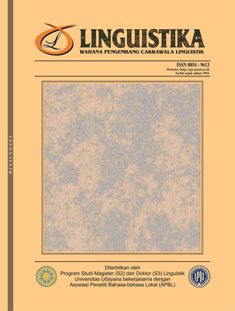BAHASA SAMBORI: SEBUAH KAJIAN MORFOSINTAKSIS
Abstract
This article aims at describing two important aspects of the Sambaori Language, namely Syntax and Morphology. It tries to identify the basic sentence of the language and describes the marking system pertaining to it. The data of this article are taken from the utterances spoken by the speakers of Sambori Language in natural setting and that are considered grammatical. Observasion method is used to collect the data along with the recording, beside interview to get a valid data. Meanwhile, the method of analysis used is distribusion method by using permutation, deletion, and substitution. The result shows that the basic sentence operates SVO word order with a quite various of predicates which can be taken by both verbs and nonverbs. Based on the analysis of the revaluation of the sentence structure in Sambori Language, from the causative constructions and aplicative construction (transitivising) and passivisation (intrantitivising), it is found that causativisasion is done by making use of affix {pa-} which is used to derive transitives from intransitive verbs and the nonverbal categories. Meanwhile, applicativisasion make use of particle wea. On the other hand, passivisasion in Sambori Language is done by fronting the object of actives before predicates (verbs) and prefixing the verbs with {ra-} if the sentence is perfective in aspect and with lexical marking wunga if the sentence is imperefective ones.













